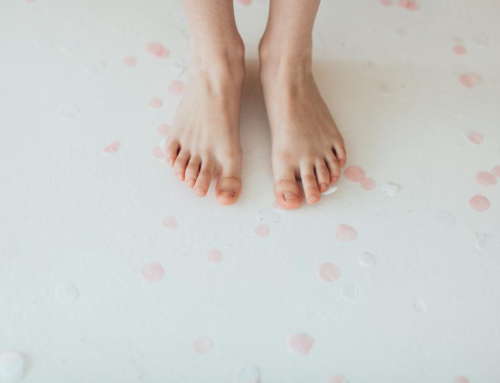Damage from bleaching toenail fungus can be very very dangerous. Commonly, this damage can manifest as a chemical burn on the skin. Chemical burns can be caused when corrosive, dangerous chemicals come into contact with the surface of the skin. Bleach is a DIY treatment for toenail fungus. Treatments of this nature are typically very ineffective. They don’t utilize properly researched techniques and aren’t done by medical professionals. Most DIY treatments for toenail fungus are going to have minimal effects on the fungal infection. However, some of these treatments are also extremely dangerous and should be avoided. A few internet blogs and articles may recommend trying bleach on the toenail fungus. This is against the majority of podiatrist’s guidance.
Damage caused by bleach on skin and nails
Damage from bleaching toenail fungus is caused by the chemical properties of bleach itself. Cleaning products like bleach are very harsh chemicals that have the potential to cause a lot of harm to the human body. They need to be this harsh so that they can properly disintegrate dirt, grime, and bacteria. Cleaning products are effective at doing this because the surfaces they are meant to clean are extremely durable. The human body is not as durable as these surfaces.
One very important part of the human body’s regular function is its pH balance. The pH balance of the skin and the body is essential so that normal processes like protection from infection and other bodily functions remain intact. Bleach has an extremely high pH. This makes it very basic. When it comes into contact with the skin it will severely disrupt the skin’s pH balance. The skin isn’t able to handle this disruption, and damage following the bleach application can be severe.
Severity of damage
Damage from bleaching toenail fungus can vary in severity depending on the length of bleach application. Chemical burns will be worse the longer the bleach is in contact with the skin. The less diluted the bleach is, the more severe the burn will be as well. This means that if the bleach is pure, it will cause more damage. Immediately rinse off any bleach that comes into contact with your skin for at least 5 minutes with water.
You should also immediately remove any clothing that could have come in contact with the chemical since it could have residual chemicals in it that will cause further damage. This rinse should be followed by a very thorough wash with soap and water to ensure that every last bit of bleach has been removed from the surface of the skin. After rinsing and washing off the bleach, dry off the area and take a look at the skin.
Examining the damage
Examining the skin can help to assess the level of damage from bleaching toenail fungus. If your skin is mildly red but you don’t have any other severe burn symptoms like pain, you can wait to see if the skin heals itself or progresses to something more serious. For any reason, if you don’t see quick improvement in the skin’s condition, you should seek medical attention as soon as possible to avoid further complications.
If the burn is a second-degree burn, it will require more serious medical intervention. These burns need immediate medical treatment, and can even cause permanent scarring. Third-degree burns go past the skin to burn the tissue underneath. This can even reach the bone in extremely severe cases. They may cause the skin to turn black or white, and can even feel numb because of nerve damage. While it is unlikely that these will result from damage from bleaching toenail fungus, they also need to be treated by a medical professional immediately.
Best Treatment options for nail fungus
Our doctors in New York always recommend at least come in for a consultation so they can assess the severity of the problem. They can also then, discuss all the best treatment options. While a majority of treatments available for toenail fungus lack effectiveness or pose risks of danger, there are some options available that are effective and still safe. gaetzpharmacy.com If you have a toenail fungus, you should be able to receive appropriate, effective, and safe treatment for it. Our nail fungus Laser is an FDA-approved treatment for the fungus that only requires one session to eliminate fungus. To learn more about the PinPointe laser technology visit our website here and schedule a free consultation with one of our podiatrists.



